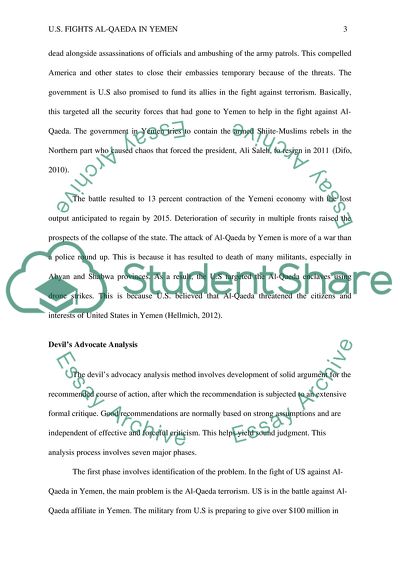Cite this document
(The USA Fighting Against Al Qaeda in Yemen Coursework Example | Topics and Well Written Essays - 2750 words, n.d.)
The USA Fighting Against Al Qaeda in Yemen Coursework Example | Topics and Well Written Essays - 2750 words. https://studentshare.org/politics/1835089-us-fights-against-al-qaeda-in-yemen
The USA Fighting Against Al Qaeda in Yemen Coursework Example | Topics and Well Written Essays - 2750 words. https://studentshare.org/politics/1835089-us-fights-against-al-qaeda-in-yemen
(The USA Fighting Against Al Qaeda in Yemen Coursework Example | Topics and Well Written Essays - 2750 Words)
The USA Fighting Against Al Qaeda in Yemen Coursework Example | Topics and Well Written Essays - 2750 Words. https://studentshare.org/politics/1835089-us-fights-against-al-qaeda-in-yemen.
The USA Fighting Against Al Qaeda in Yemen Coursework Example | Topics and Well Written Essays - 2750 Words. https://studentshare.org/politics/1835089-us-fights-against-al-qaeda-in-yemen.
“The USA Fighting Against Al Qaeda in Yemen Coursework Example | Topics and Well Written Essays - 2750 Words”. https://studentshare.org/politics/1835089-us-fights-against-al-qaeda-in-yemen.


